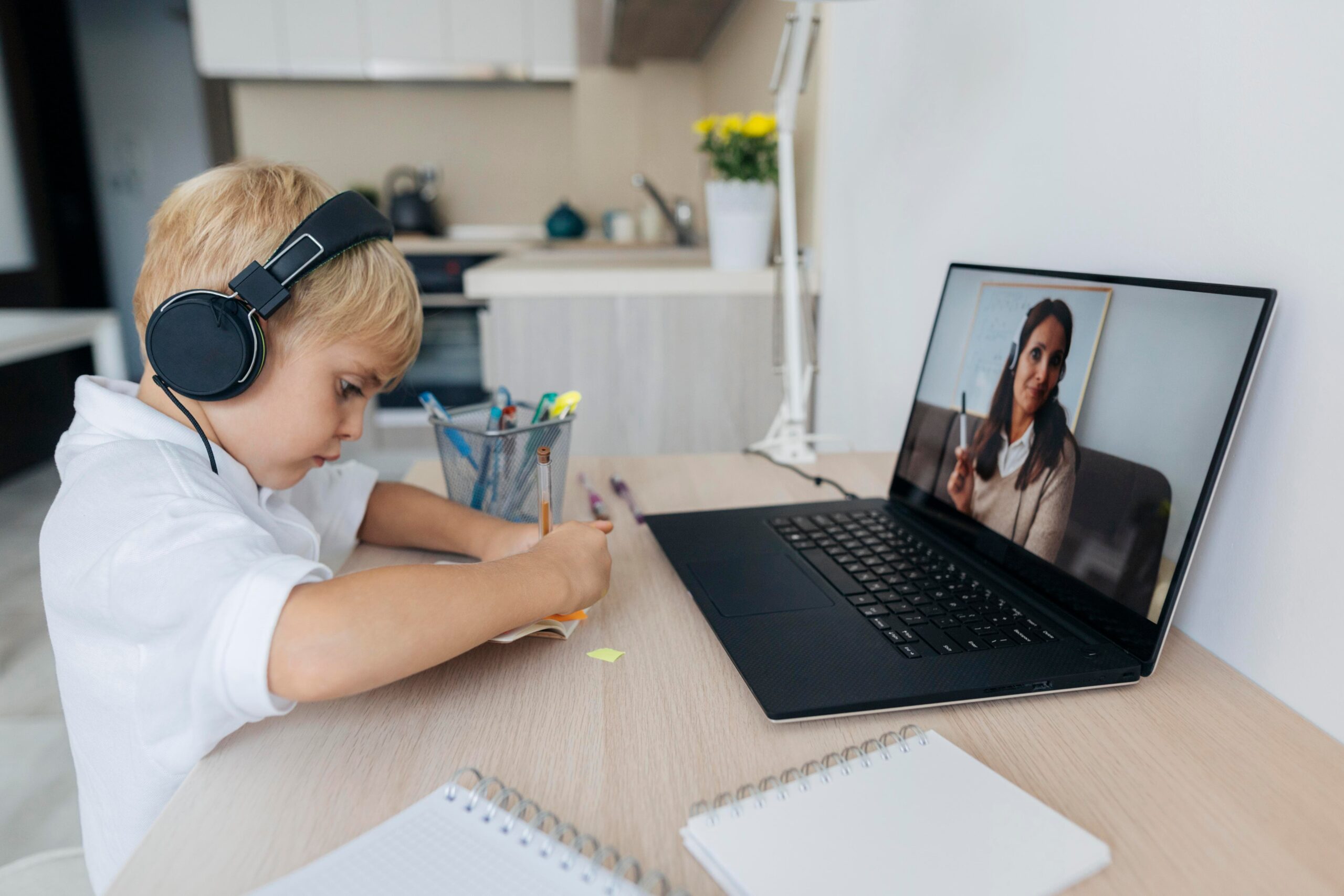Key Points:
- Telehealth ABA therapy offers flexibility for families balancing busy schedules and consistent support for children with autism.
- Virtual ABA sessions can include parent training, direct therapy, and behavior consultations, right from home.
- Online ABA doesn’t replace in-person therapy but expands access, especially in rural areas or for families with limited transportation.
For families of children with autism, time isn’t just precious. It’s stretched thin. Between work obligations, school pickups, and specialist appointments, adding one more drive to an ABA center can feel overwhelming.
That’s where telehealth ABA comes in. It gives families access to professional, evidence-based therapy without sacrificing time, consistency, or quality. Whether you’re managing therapy for a newly diagnosed child or looking to supplement in-person sessions, virtual ABA is becoming a practical and effective option.
But how does online ABA actually work? What are the benefits, limitations, and what should parents expect? This guide dives into all of that and more.
What Is Telehealth ABA?
Telehealth ABA therapy is the delivery of Applied Behavior Analysis services via secure video conferencing platforms. It brings the tools of behavior therapy into your home without requiring a therapist to be physically present.
Unlike traditional ABA in-home therapy, which involves in-person visits, online ABA allows therapists to provide services remotely. These services can include direct therapy for your child, parent coaching, behavior assessments, and skill development programs.
This model is guided by the same principles as in-person ABA, and sessions are still tailored to each child’s needs. The only difference? You’re logging in instead of commuting.
Why Busy Families Are Turning to Virtual ABA
If you’ve ever canceled a session because of traffic, a sick sibling, or a late meeting, you’re not alone. For many families, the biggest hurdle to consistent therapy isn’t motivation. It’s logistics.
Here’s where telehealth ABA therapy helps:
- Reduces commute time and stress associated with frequent appointments.
- Offers scheduling flexibility, including evenings or weekends.
- Enables therapy continuity during travel, illness, or seasonal disruptions.
- Provides access to specialists, especially if you live far from an ABA center near me or in a rural area.
Families no longer have to choose between therapy and life’s other priorities. They can do both.
 What Services Can Be Done Through Online ABA?
What Services Can Be Done Through Online ABA?
Not every ABA service can be done virtually, but many core components work well online. Common types of telehealth sessions include:
- Parent training and coaching
- Functional behavior assessments (FBAs)
- Direct therapy for children, depending on age and skills
- Behavior consultation and plan adjustments
- Social skills development through virtual interaction and modeling
ABA therapy at home through telehealth is especially effective when the goal is to empower caregivers to implement strategies in everyday routines. Many providers now offer blended models, combining in-home ABA services near me with online sessions for added flexibility.
Is Telehealth ABA Effective?
While in-person therapy is often the gold standard for intensive programs, research supports the effectiveness of telehealth ABA, especially for caregiver-led interventions.
Virtual models work particularly well for:
- Coaching parents of young children
- Supporting generalization of skills in real environments
- Providing ongoing supervision and updates to behavior plans
Telehealth is not about replacing your local Applied Behavior Analysis center. It’s about extending access and maintaining consistency, which are two things that are critical in ABA therapy. In fact, some families use virtual ABA in combination with in-person sessions from an ABA center near me.
What to Expect From a Telehealth ABA Session
Here’s a brief walkthrough of what a typical telehealth ABA therapy session might look like:
- Pre-session planning: Your provider will send you materials or instructions to prepare. This might include toys, preferred items, or a quiet space setup.
- Live video session: You’ll connect with a Board Certified Behavior Analyst (BCBA) or Registered Behavior Technician (RBT) who guides the session.
- Active participation: Depending on your child’s needs, the therapist may work directly with your child through the screen, or coach you in real time.
- Progress tracking: Data is still collected during every session, and progress is monitored regularly.
- Follow-up: You may receive strategies, visual supports, or feedback to implement between sessions.
The goal of online ABA isn’t to keep children in front of screens but to support real-world changes using virtual tools.
Who Is a Good Fit for Telehealth ABA?
Not every child or family will thrive with online ABA, but it can be an excellent fit if:
- Your child is already working on communication or social skills and can respond to prompts virtually.
- You’re seeking ABA in-home therapy but live outside the provider’s service range.
- You want more involvement in therapy and are open to coaching.
- You need more flexibility than clinic-based models allow.
- Your local area lacks access to a provider of ABA therapy in Utah, or waitlists are long.
Even if your child requires in-person sessions for certain goals, adding virtual components can speed up progress and increase family engagement.
Tips for Success With Online ABA
To get the most from virtual sessions, consider these practical tips:
- Create a distraction-free space: Set up a quiet area with minimal background noise or interruptions.
- Use familiar items: Preferred toys or routines help with engagement during sessions.
- Be an active participant: Especially for younger children, your involvement as a parent is critical.
- Communicate often: Keep your BCBA informed of changes, challenges, or regressions.
- Stay consistent: Treat online sessions with the same level of priority as in-person ones.
Most families find that once routines are established, ABA therapy at home via telehealth becomes second nature.
The Growing Role of Telehealth in ABA Therapy
As technology continues to advance and families seek more adaptable care models, telehealth ABA therapy is playing a larger role in how services are delivered.
Whether your child is receiving direct therapy, parent coaching, or a hybrid of both, online ABA makes it easier to maintain progress without adding strain to your day-to-day life.
It’s not about replacing what works, but about expanding what’s possible.
Reimagine ABA Support for Your Family
Quality ABA therapy should meet your family where you are, and sometimes that’s in a clinic, and sometimes it’s through a screen. The rise of virtual ABA and hybrid care models ensures that busy families no longer have to compromise between getting help and maintaining balance.
If you’re navigating therapy options and wondering how to make it all work, telehealth ABA might be the solution that fits into your life, not the other way around.
Looking for reliable, flexible, and compassionate ABA therapy in Utah? Acclimate ABA offers personalized telehealth and in-home therapy services tailored to your child’s needs.
Whether you’re searching for “in-home ABA services near me” or hoping to reduce travel without compromising on care, our experienced team at Acclimate ABA delivers therapy where it matters most, right at home.
Take the first step toward building consistent progress and lasting change with our reliable ABA services in Utah. Contact us today to learn more about how telehealth and in-home options can work for your family.


